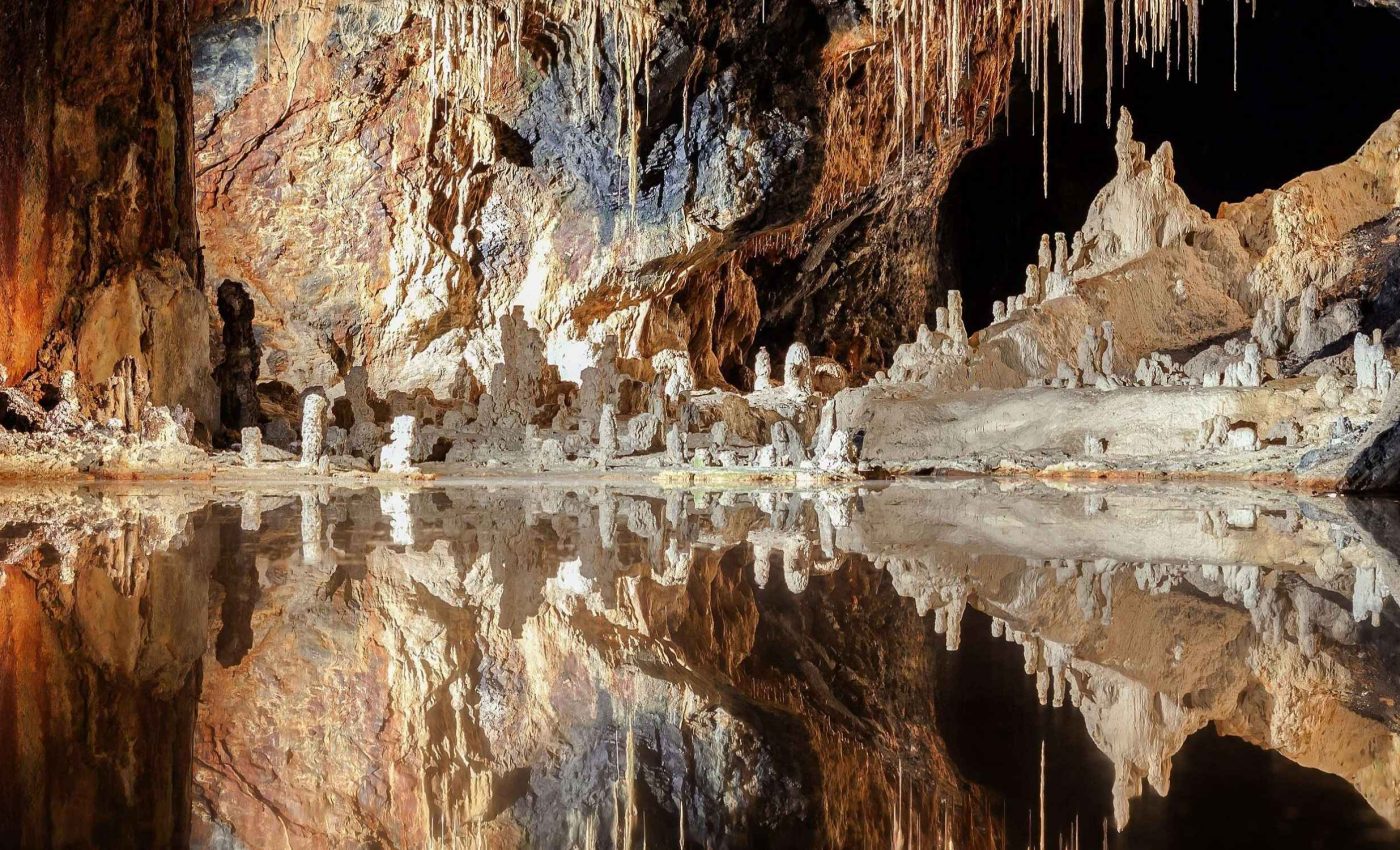
Explorers confirm the existence of an underground lake capable of filling three and a half Olympic swimming pools
Many travelers love hearing about faraway places few have set foot in. The fascination grows when those spots hold something spectacular beneath the ground.
In 2021, a group of Czech explorers came across a sprawling underground lake in southern Albania but lacked the tools to measure it.
They returned in 2024 with advanced gear and realized it is the biggest known subterranean thermal lake on record, according to details shared by the Neuron Foundation, the group supporting their journey.
Understanding thermal lakes – the basics
A thermal lake is a natural body of water heated by geothermal energy from deep within the Earth.
Unlike ordinary lakes that rely on sunlight or seasonal weather for warmth, thermal lakes stay warm year-round thanks to underground volcanic activity, hot springs, or fissures that release heat and minerals into the water.
These lakes often bubble with energy, carrying a distinctive sulfur smell and a mix of minerals that can tint the water in shades of blue, green, or even rust-red.
Some thermal lakes are calm and inviting, while others hiss and steam like a giant kettle on the boil.
People have flocked to thermal lakes for centuries, drawn by their warmth and their reputation for healing. The mineral-rich waters are believed to soothe sore muscles, improve circulation, and even help with skin conditions.
Signals from an underground lake
A thick column of steam drifting from a craggy slope first hinted at a hidden water source. The team noticed this plume near the town of Leskovik and found it emanated from more than 330 feet below the surface.
They had to rappel deep into a rugged pit to reach an extensive cave system. The presence of lidar scanners, which use laser pulses to gather precise distance data, helped them map the lake.
Exploring deep cave systems like the one housing Lake Neuron comes with serious risks. Navigating unstable rock formations, extreme humidity, and limited oxygen levels requires both specialized training and equipment.
Marek Audy’s team relied on single-rope technique (SRT), waterproof lighting, and rugged gear designed for wet cave environments. Even with modern tools, the journey to the lake’s chamber demanded careful planning and physical endurance.
Revisiting a striking discovery
“In order for Czech science to present this phenomenal discovery, it was necessary to conduct scientific research and precise measurements,” said Audy. He had first entered that limestone cavern in search of unique thermal features.
The explorers named the lake Neuron in honor of their sponsor. Initial estimates reveal the water volume can fill three and a half Olympic-sized pools, or roughly 294,350 cubic feet.
True size of the underground lake
During their first trip, the team used basic mapping equipment and quickly recognized the lake was something extraordinary.
With better instruments during the 2024 expedition, they measured its length at 454 feet and its width at 138 feet.
Local politics once restricted access to this border region, limiting scientific research. Now that the explorers have free rein, they hope to examine the geological layers around the site.
Comparison with other underground lakes
Although Lake Neuron now holds the record, other subterranean lakes have made headlines in the past. Dragon’s Breath Cave in Namibia contains the largest non-thermal underground lake by surface area, though it’s not heated by geothermal activity.
In contrast, Lake Neuron’s unique combination of size and temperature puts it in a different category altogether. It stands out not just for its dimensions, but for being tucked deep within a thermally active cave network in southeastern Europe.
Hidden lakes carry possible clues about underground ecosystems, such as isolated microbes or mineral formations.
Hungary’s capital once held the record for a thermal lake hidden beneath city baths, as reported in 2008. The Albania finding surpasses that chamber in size and volume.
How thermal lakes form underground
Underground thermal lakes usually form where geothermal heat warms trapped groundwater, often in areas with volcanic or tectonic activity.
Over thousands of years, heated water seeps into natural cavities carved by pressure, erosion, or chemical weathering.
In Albania’s case, the region sits along the Hellenic Arc, a known subduction zone where the African plate is slowly sliding beneath the Eurasian plate.
That movement creates conditions for underground heat flow, which likely feeds Lake Neuron’s thermal source.
Outlook on future explorations
Researchers plan to assess the temperature gradients within the lake and investigate any distinct organisms lurking in its depths. Some subterranean waterways host species that live nowhere else on Earth.
They will also evaluate how surrounding volcanic or tectonic activity might feed these hot springs. Conditions in such isolated systems can shed light on broader geological processes across continental fault lines.
This discovery highlights how much more remains to be learned about seemingly familiar regions. Curiosity continues to drive explorers toward places once deemed unreachable.
Local response and future tourism hopes
The discovery has already caught the attention of local leaders in Leskovik, who see potential for eco-tourism and scientific tourism in the region.
Officials are now considering how to improve safe access to the area without disturbing its fragile underground environment.
Albania’s Ministry of Tourism and Environment is reportedly reviewing conservation plans to ensure the lake is protected.
They’ve also hinted at interest in collaborating with international researchers for long-term ecological monitoring.
This study was made possible by the Neuron Foundation.
—–
Like what you read? Subscribe to our newsletter for engaging articles, exclusive content, and the latest updates.
Check us out on EarthSnap, a free app brought to you by Eric Ralls and Earth.com.
—–













